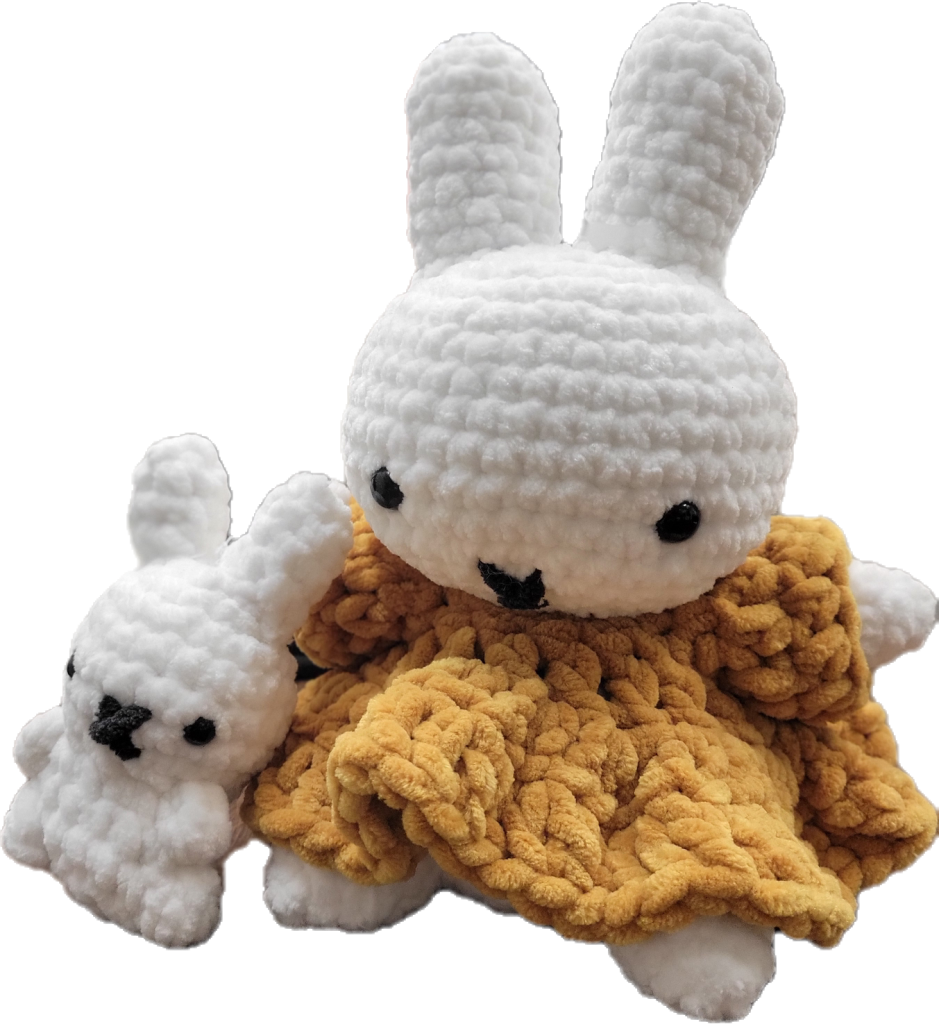Kylie
就像鉤針編織需要專注、耐心與創意,我們的生命也在上帝的手中被細細雕琢。
Just as crochet requires focus, patience, and creativity, our lives are carefully shaped in the hands of God.
For our 2024 Christmas toy drive, I decided that instead of buying toys, I would crochet them. I’ve knitted plenty of scarves and potholders in the past, but I never bothered to properly learn crochet until recently. Compared to the mindless repeating pattern of a scarf, the patterns for making a 3D penguin or frog require much more careful counting. I can’t as easily crochet one while watching a show or movie. Still, the joy of a cute little animal made of yarn, just in its existence, makes it all worth it.
Unlike knitting, crochet cannot be done by machine. Though the aesthetic can be approximated, the real thing requires human hands. I could say the same about creative arts in general. In the past few years, image-generation neural networks have advanced to the point of making false pictures that look almost entirely real, and a new type of “AI artist” has learned to leverage this technology to generate almost any image they want. They hone the wording of their prompts, perhaps with rounds of refinement to adjust certain aspects of the image. Usually, such “art” ends up one of two ways: either it has bizarre flaws such as too many fingers on one hand and too few on the other—or it is so perfect, shiny, and idealized that it gives a creepy, uncanny-valley effect. On the surface, it looks very similar to art; on a deeper level, its generation came from a machine that simply does not understand how hands are supposed to work.
Artists who don’t outsource to machine learning algorithms argue that human-made art is set apart by the intention put into it. Someone who has studied light and shadow can choose where to set the light source for a painting. Then they add in the shadows and highlights, perhaps also the scattering or bounce lights, accordingly. A crochet pattern made by a person can easily count that doubling every stitch in a row of 6 stitches will lead to 12 stitches in the next row. They might also intentionally shift the spacing of increases in the next rows to help maintain even roundness. It might take a long time to make something. Or if it’s quick, years of practice have carved the muscle memory that looks effortless. There’s thoughtfulness, passion, even love. It’s harder to feel unlovable when someone gifts you a little toy animal in which every choice, every stitch, was made with care.
This love within human creativity, like all love, reflects our Creator. He spoke the world into existence starting from “Let there be light.” He called it “good” and humans “very good.” Psalm 139:13–14 says—
“For you formed my inward parts;
you knitted me together in my mother’s womb.
I praise you, for I am fearfully and wonderfully made.
Wonderful are your works;
my soul knows it very well.”
I recently had a talk with a friend who reminded me that God is Creator, and His creation is beautiful. It follows that if we are His creation, we are also beautiful. In truth, I still struggle to believe I am “fearfully and wonderfully made.” So often I feel broken, either internally or by outside circumstances, and I cry out to God to ask why. What was the intention behind the trauma, the stress, the heartbreak? If I am a work in progress, still being made “perfect and complete” by “trials of various kinds” (James 1:2–4), is that work truly being done with care and love?
It must be. If I love “because He first loved us” (1 John 4:19) and that love drove me to crochet a stuffed rabbit wearing a little dress to gift to a child I have never met—what if love drives God to make me, continuously, to love others in need? Or even to generate joy via my simple existence? It still boggles my mind that I mean something to the Creator of the universe, imperfect as I am, and yet the prophet Zephaniah has said—
“he will rejoice over you with gladness;
he will quiet you by his love;
he will exult over you with loud singing.”
以下為中文翻譯:
為了我們2024年的聖誕玩具募捐活動,我決定不買玩具,而是自己鉤織。我以前織過很多圍巾和隔熱墊,但直到最近才開始認真學習鉤織。相較於圍巾那種漫無目的的重複圖案,製作3D企鵝或青蛙的圖案需要更仔細的計算。我可沒那麼容易一邊看電視劇或電影一邊鉤織。不過,光是看到一隻用毛線織成的可愛小動物,就足以讓我感到欣喜,這一切都值得了。
與針織不同,鉤針編織無法由機器完成。雖然其美感可以近似,但真正的鉤針編織需要人手來完成。對於創意藝術,我的看法大致是如此。過去幾年,神經網路生成的圖像已經發展到能夠製作出幾乎完全逼真的程度,而新一代的「人工智慧藝術家」已經學會了利用這項技術產生幾乎任何他們想要的圖像。他們會不斷完善Prompt,甚至可能經過多輪的改進來調整影像的某些方面。通常,這樣的「藝術」最終會以兩種方式呈現:要么存在一些怪異的缺陷,比如一隻手的手指太多,另一隻手的手指太少;要么完美無瑕、光鮮亮麗、理想化,以至於營造出一種令人毛骨悚然的恐怖谷效應。表面上,它看起來與藝術作品非常相似;但從更深層次來看,它的生成者是一台根本不理解雙手如何運作的機器。
不依賴機器學習演算法的藝術家認為,人類創作的藝術之所以與眾不同,是因為它傾注了心血。研究過光影的人可以選擇繪畫的光源位置,然後添加陰影和高光,或許也會相應地添加散射光或反射光。人工編織的鉤針圖案很容易就能算出,一行6針,每針加倍,下一行就會變成12針。他們也可能故意調整下一行加針的間距,以保持均勻的圓度。一件作品可能需要很長時間才能完成。如果創作很快,多年的練習也會讓你形成肌肉記憶,讓你覺得毫不費力。這其中蘊含著體貼、激情,甚至是愛。如果有人送你一個小玩具動物,而裡面的每一個選擇、每一針都經過精心設計,你就不會覺得不被愛。
人類創造力中的這種愛,就像所有愛一樣,反映了我們的創造者。祂說:“要有光。”祂稱光為“好的”,稱人類為“甚好”。詩篇139:13-14說——
「13我的肺腑是你所造的;
我在母腹中,你已覆庇我。
14我要稱謝你,因我受造,奇妙可畏;
你的作為奇妙,這是我心深知道的。 」
最近我和一位朋友聊天,他提醒我,上帝是創造者,祂的創造是美麗的。因此,如果我們是祂的創造物,我們也是美麗的。說實話,我仍然難以相信自己是「受造奇妙可畏」的。我常常感到心碎,無論是內在的還是外在的環境,我都會向上帝呼求,問祂為什麼。這些創傷、壓力和心碎背後的目的又是什麼?如果我還在不斷進步,仍在通過“百般試煉”(雅各書1:2-4)來“成全、完備”,那麼,這項工作真的充滿關懷和愛嗎?
一定是這樣的。如果我愛「因為神先愛我們」(約翰一書4:19),而這份愛驅使我鉤織了一隻穿著小裙子的毛絨兔子,送給一個我從未謀面的孩子——如果愛驅使上帝創造我,不斷地去愛那些需要幫助的人?甚至讓我透過我簡單的存在就能獲得快樂?我仍然無法理解,儘管我並不完美,但我對宇宙的創造者來說仍然意味著什麼,然而先知西番雅卻說過——
「他在你中間必因你歡欣喜樂,
默然愛你,且因你喜樂而歡呼。」
讀完有感想?請反饋給[email protected]!



